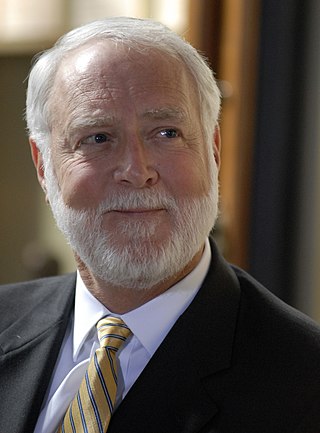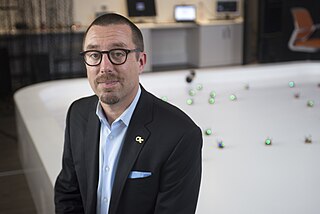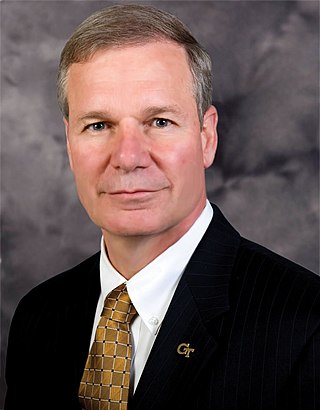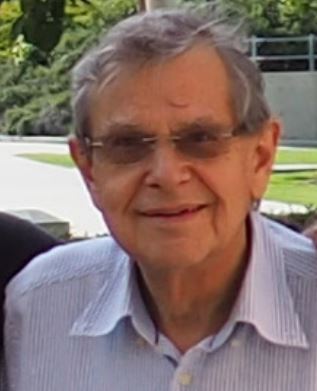Related Research Articles

Dean Lawrence Kamen is an American engineer, inventor, and businessman. He is known for his invention of the Segway and iBOT, as well as founding the non-profit organization FIRST with Woodie Flowers. Kamen holds over 1,000 patents.

The Technion – Israel Institute of Technology is a public research university located in Haifa, Israel. Established in 1912 by Jews under the dominion of the Ottoman Empire, the Technion is the oldest university in the country.

Southern Polytechnic State University was a public, co-educational, state university in Marietta, Georgia, United States approximately 20 miles (32 km) northwest of downtown Atlanta. Until 2015, it was an independent part of the University System of Georgia and called itself "Georgia's Technology University."

Gerald Wayne Clough is an American civil engineer and educator who is President Emeritus of the Georgia Institute of Technology and former Secretary of the Smithsonian Institution. A graduate of Georgia Tech in civil engineering, he was the first alumnus to serve as President of the Institute.

Gary Arnold Flandro is an American aerospace engineer who is currently the professor for the Boling Chair of Excellence in Space Propulsion (Emeritus) at the University of Tennessee Space Institute. He is also the Vice President and Chief Engineer for Gloyer-Taylor Laboratories (GTL).

Lyman Hall was a professor and president of the Georgia School of Technology. Hall's administration introduced degrees in electrical engineering and civil engineering in December 1896, textile engineering in February 1899, and engineering chemistry in January 1901.

Liviu Librescu was a Romanian–American scientist and engineer. A prominent academic in addition to being a survivor of the Holocaust, his major research fields were aeroelasticity and aerodynamics.
Seth R. Marder is an American physical chemist best known for his development of the quantum mechanical foundations of nonlinear electro-optics in organic dyes and materials.

Magnus B. Egerstedt is a Swedish-American roboticist who is the Dean of the Henry Samueli School of Engineering at the University of California, Irvine. He was formerly the Steve C. Chaddick School Chair and Professor at the School of Electrical and Computer Engineering, Georgia Institute of Technology.

Katepalli Raju Sreenivasan is an aerospace scientist, fluid dynamicist, and applied physicist whose research includes physics and applied mathematics. He studies turbulence, nonlinear and statistical physics, astrophysical fluid mechanics, and cryogenic helium. He was the dean of engineering and executive vice provost for science and technology of New York University. Sreenivasan is also the Eugene Kleiner Professor for Innovation in Mechanical Engineering at New York University Tandon School of Engineering and a professor of physics and mathematics professor at the New York University Graduate School of Arts and Science and Courant Institute of Mathematical Sciences.
Jeff S. Shamma is an American control theorist. He is the Department Head and Professor of Industrial and Enterprise Systems Engineering at the University of Illinois Urbana-Champaign. Formerly, he was a Professor of Electrical engineering at the King Abdullah University of Science and Technology. Before that, he held the Julian T. Hightower Chair in Systems & Control Systems and Controls at the Georgia Institute of Technology. He is known for his early work in nonlinear and adaptive control, particularly on gain scheduling, robust control, and more recently, distributed systems.
Satya Atluri was an Indian American engineer, educator, researcher and scientist in aerospace engineering, mechanical engineering and computational sciences, who was a Distinguished Professor Emeritus of Aerospace Engineering at the University of California, Irvine. Since 1966, he made fundamental contributions to the development of finite element methods, boundary element methods, Messless Local Petrov-Galerkin (MLPG) methods, Fragile Points Methods, Local Variational Iteration Methods, for general problems of engineering, solid mechanics, fluid dynamics, heat transfer, flexoelectricity, ferromagnetics, gradient and nonlocal theories, nonlinear dynamics, shell theories, micromechanics of materials, structural integrity and damage tolerance, Orbital mechanics, Astrodynamics, digital Twins of Aerospace Systems, etc.

George Paul "Bud" Peterson is the former president of the Georgia Institute of Technology. Peterson is a graduate of Kansas State University, where he earned B.S. degrees in Mechanical Engineering and Mathematics and an M.S. in Engineering, and Texas A&M University, where he earned a Ph.D. in mechanical engineering. On January 7, 2019, Peterson announced his upcoming retirement from Georgia Tech, effective summer of 2019. His successor, Ángel Cabrera, assumed the office September 1, 2019, after serving for seven years as president of George Mason University in Fairfax, Virginia. In September 2019, the University System of Georgia Board of Regents voted to name Peterson President Emeritus and Regents Professor of Mechanical Engineering for the standard three-year term. The Board of Regents also awarded him tenure.
Frederick Stucky Billig was an American aerospace engineer who was a pioneer in the development of scramjet propulsion.

The Georgia Institute of Technology is a public research university and institute of technology in Atlanta, Georgia. Established in 1885, it is part of the University System of Georgia and has satellite campuses in Savannah, Georgia; Metz, France; Shenzhen, China; and Singapore.
John Saylor Coon was the first Mechanical Engineering and Drawing Professor at Georgia Tech, and he was also the first chair of Georgia Tech's Mechanical Engineering Department. Coon made significant contributions to the school during his 35-year career at Georgia Tech.
Edward W. Price was an engineer who worked in the field of solid rocket propellants, primarily at the Naval Ordnance Test Station (NOTS), where he made contributions to ignition, combustion instabilities, fuel components, and the "T-burner" method of testing. After 30 years at NOTS, he moved to Georgia Tech in 1974 to continue his propellant work, being promoted to Regents' Professor in 1986, and retiring in 1991. He was recognized with the NASA Public Service Award in 1988 and elected to the National Academy of Engineering in 2000 for "critical contributions to the understanding of solid propellant combustion and solid rockets developments".
Avinash Kumar Agarwal is director of Indian Institute of Technology, Jodhpur. He is an Indian mechanical engineer, tribologist and a professor at the Department of Mechanical Engineering of the Indian Institute of Technology, Kanpur. He is known for his studies on internal combustion engines, Emissions, alternate fuels and CNG engines and is an elected fellow of the American Society of Mechanical Engineering (2013), Society of Automotive Engineers, US (2012), National Academy of Science, Allahabad (2018), Royal Society of Chemistry, UK (2018), International Society for Energy, Environment and Sustainability (2016), and Indian National Academy of Engineering (2015). The Council of Scientific and Industrial Research, the apex agency of the Government of India for scientific research, awarded him the Shanti Swarup Bhatnagar Prize for Science and Technology, one of the highest Indian science awards for his contributions to Engineering Sciences in 2016. Agarwal has been bestowed upon Prestigious J C Bose Fellowship of Science and Engineering Research Board. Government of India. Agarwal is among the top ten highly cited researchers (HCR) of 2018 from India, as per Clarivate Analytics, an arm of Web of Science.

Forman Arthur Williams is an American academic in the field of combustion and aerospace engineering who is Emeritus Professor of Mechanical and Aerospace Engineering at the University of California San Diego.
Bernard Judah Matkowsky was an American applied mathematician.
References
- ↑ "Professor Ben T. Zinn". Georgia Institute of Technology. Retrieved March 23, 2009.
- 1 2 3 Sam Heys. "Getting Kicks in Academics". GTA Alumni. Archived from the original on March 18, 2005. Retrieved March 23, 2009.
- 1 2 3 4 G. Wayne Clough (May 18, 2006). "Dedication of the Ben T. Zinn Combustion Lab" (PDF). Georgia Institute of Technology. Archived from the original (PDF) on July 18, 2011. Retrieved March 23, 2009.
- ↑ "N. Y. U. WINS IN SOCCER; Overpowers Pratt, 13 to 0, as Cinovitz Gets 4 Goals". New York Times. October 11, 1958. Retrieved March 20, 2009.
- ↑ "U.S. MNT: 1916-1959". National Soccer Hall of Fame. Archived from the original on March 3, 2016. Retrieved March 29, 2009.
- ↑ "USA 1 - England 8 (Match summary)". www.englandstats.com. May 28, 1959. Retrieved March 29, 2009.
- ↑ Zinn, Ben T. (1966). A theoretical study of nonlinear transverse combustion instability in liquid propellant rocket motors.
- ↑ "Professor Ben T. Zinn - Education". Georgia Institute of Technology. Retrieved March 23, 2009.
- ↑ "Dr. Ben T. Zinn". National Academy of Engineering. Retrieved March 23, 2009.[ permanent dead link ]
- ↑ "ASME Honors Ben T. Zinn for Research in Combustion Technology". American Society of Mechanical Engineers. April 11, 2006. Retrieved March 23, 2009.
- ↑ "Ben T. Zinn". Daniel Guggenheim School of Aerospace Engineering. Archived from the original on May 22, 2008. Retrieved March 23, 2009.